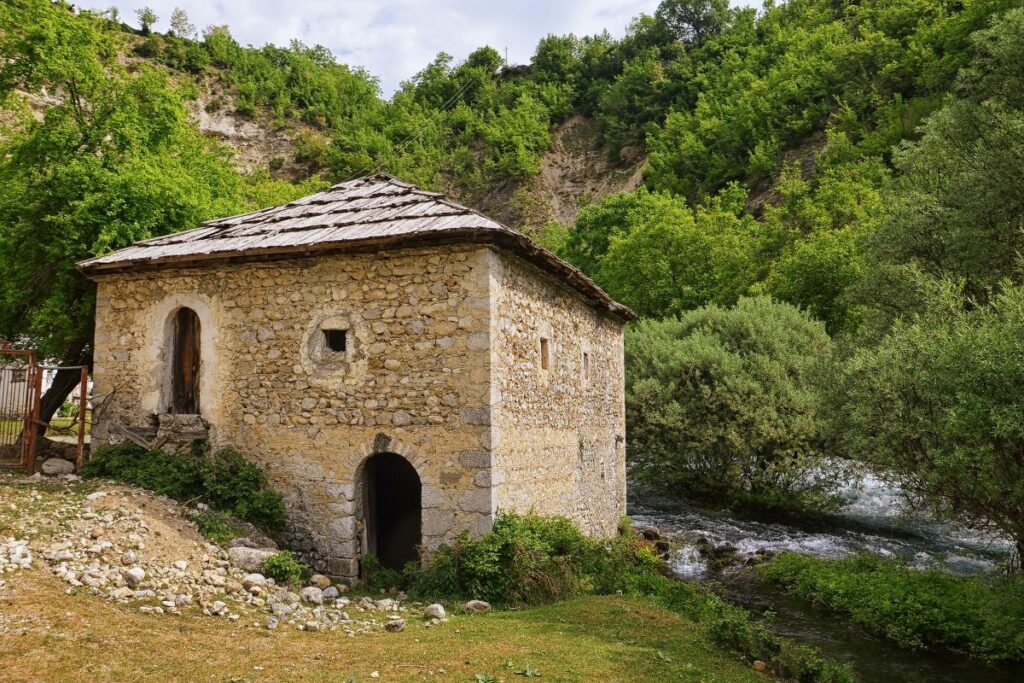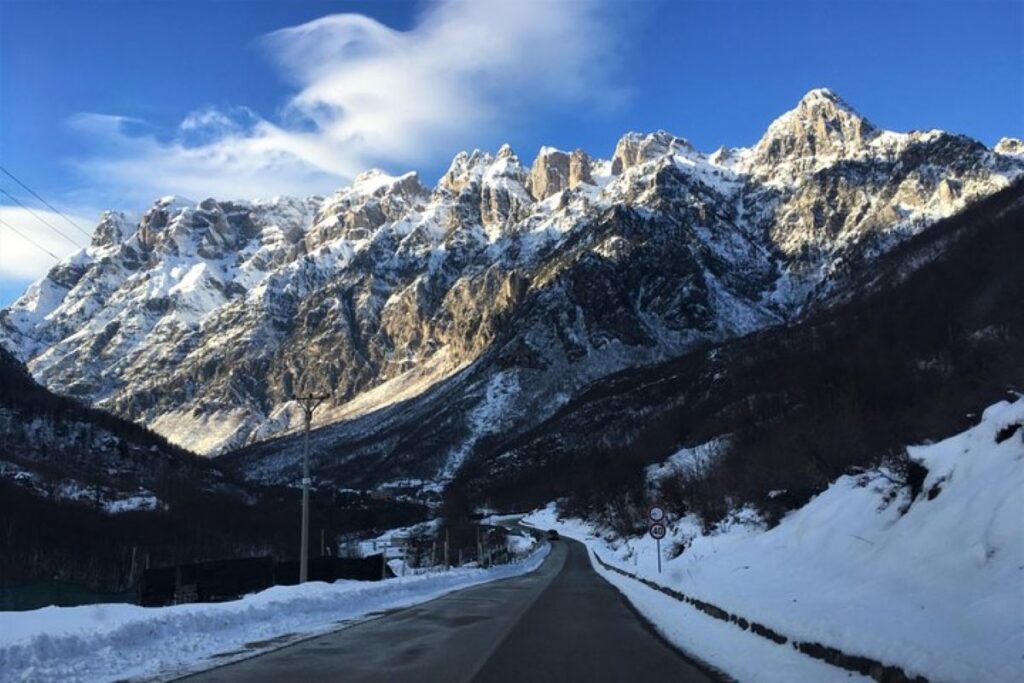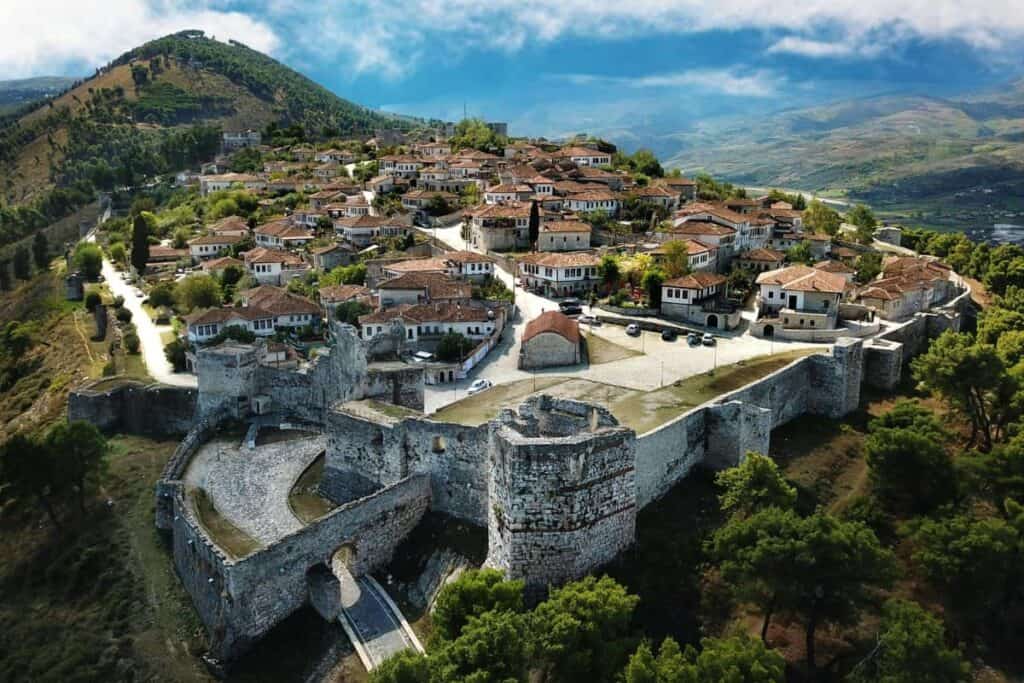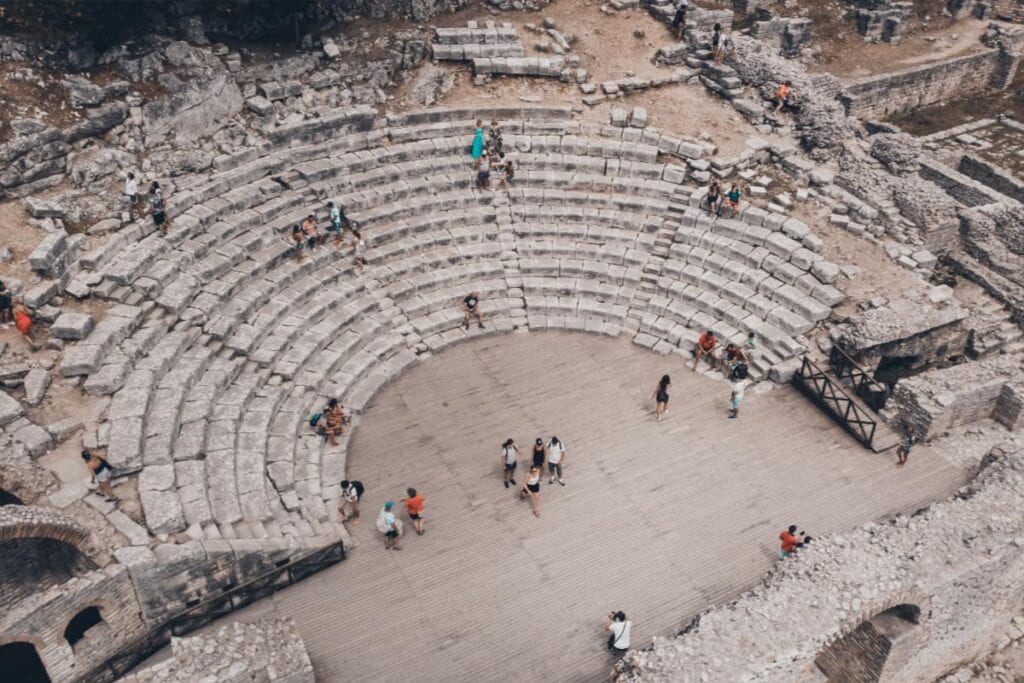Introduction: Tropoja – Where History Meets Nature
Nestled in the northern reaches of Albania, Tropoja is a region of unparalleled beauty and profound historical significance. Known as the “Land of the Mountain Eagles”, Tropoja is a hidden gem where the natural wonders of the Albanian Alps harmoniously blend with a storied past that spans centuries. Its rivers, peaks, and valleys have not only shaped the lives of its people but have also stood witness to pivotal moments in Albania’s history.
From the ancient ruins of Kalaja e Rosujës (Rosuja Castle) to its vibrant traditions, Tropoja invites travelers to explore its timeless landscapes and connect with its deep cultural roots.

The Historical Legacy of Tropoja
1. Ancient Beginnings
The history of Tropoja dates back to the Illyrian era, long before the arrival of the Romans or Ottomans. As part of the ancient Illyrian tribes, the region was a hub for early settlers due to its fertile valleys and strategic location along key trade routes. The Black Drin River, which flows through the region, was vital for transport and agriculture, supporting flourishing communities.
Archaeological evidence suggests that Tropoja was a vital link between the Adriatic coast and inland areas, facilitating cultural and economic exchange.
2. Medieval Tropoja and Kalaja e Rosujës
One of the most enduring symbols of Tropoja’s history is Kalaja e Rosujës (Rosuja Castle).
- Built: During the medieval period, likely in the 13th–14th centuries.
- Purpose: It served as a defensive stronghold, guarding the entrance to the Valbona Valley and protecting trade and communication routes.
Kalaja e Rosujës became a focal point during the region’s resistance against external invasions, including Ottoman incursions. Perched on a hill, the castle provided a commanding view of the valley and surrounding peaks, ensuring its strategic importance for centuries.
Today, the ruins of Rosuja Castle are a poignant reminder of Tropoja’s resilience and its role in Albania’s turbulent history. Visitors can walk through its ancient walls, imagining the battles and alliances that shaped the region’s fate.
3. Ottoman Influence and the Rise of Kanun
During the Ottoman occupation, Tropoja became part of the larger Malësia e Gjakovës region, known for its fierce independence and refusal to submit to external rule. The highland tribes adhered to the traditional Kanun of Lekë Dukagjini, a set of customary laws that governed social behavior, family matters, and justice.
- Kanun and Tropoja: The people of Tropoja were known for their strict adherence to besa (a pledge of honor), which fostered a strong sense of community and mutual respect.
- Resistance: Tropoja’s mountains served as a natural fortress for those resisting Ottoman rule, hosting countless uprisings and guerrilla movements.
The Ottomans’ attempts to assert control over Tropoja were met with fierce resistance, making the region a symbol of Albanian defiance.
4. Modern Tropoja and the Albanian National Awakening
In the 19th and early 20th centuries, Tropoja played a key role in Albania’s national awakening and the struggle for independence. The town of Bajram Curri, named after a prominent national hero, became a center of resistance against both Ottoman and later Serb forces.
- Bajram Curri: A local leader and freedom fighter, Curri led numerous campaigns to secure Albania’s sovereignty. His legacy is celebrated across the region, and a museum in Tropoja’s main town honors his contributions.
Tropoja also served as a vital link during the Balkan Wars and World War II, providing shelter to resistance fighters and aiding Albania’s efforts to assert its independence on the global stage.
Natural Wonders of Tropoja
While Tropoja’s history is undeniably rich, its natural beauty is equally captivating.
1. Valbona Valley National Park
The crown jewel of Tropoja is the Valbona Valley National Park, a protected area renowned for its dramatic alpine landscapes.
- Key Features:
- The Valbona River, with its turquoise waters.
- Towering peaks such as Mount Jezerca, the second-highest mountain in Albania.
- Dense forests and meadows filled with wildflowers.
The park offers countless hiking trails, including the famous Valbona Pass, which connects Tropoja to Theth National Park.
2. Kalaja e Rosujës (Rosuja Castle)
The castle’s location within the Valbona Valley adds to its allure. Visitors can combine their historical exploration with a scenic hike, enjoying sweeping views of the valley below.
3. The Black Drin River
Flowing through Tropoja, the Black Drin River adds a serene touch to the region’s rugged beauty. It is ideal for fishing, picnicking, and peaceful walks along its banks.
Cultural Heritage of Tropoja
Tropoja’s culture is deeply rooted in its traditions, which have been preserved through generations.
1. Folklore and Music
- Lahuta: This one-stringed instrument is central to Tropoja’s musical heritage, often accompanying songs that recount historical events and local legends.
- Valle: Traditional dances, characterized by intricate footwork and vibrant costumes, are performed during festivals and celebrations.
2. Festivals and Celebrations
Tropoja’s festivals highlight its strong community spirit and love for tradition.
- Day of the Valbona Valley: A celebration of the region’s natural and cultural treasures, featuring music, dancing, and traditional food.
- Local Fairs: Seasonal markets and fairs bring together artisans, farmers, and locals to celebrate Tropoja’s agricultural and cultural wealth.
3. Traditional Cuisine
Food in Tropoja reflects the region’s mountainous environment and self-sufficient lifestyle.
- Flija: A layered pastry cooked over open flames.
- Jufka: Handmade pasta served with hearty sauces.
- Tavë Kosi: Lamb baked in yogurt, a staple of northern Albanian cuisine.
Locally produced raki and honey are also highlights of Tropoja’s culinary offerings.
How to Experience Tropoja
1. Getting There
- By Car: A scenic 6–7 hour drive from Tirana to Bajram Curri.
- By Ferry: Take the stunning Komani Lake ferry to Fierza, then continue to Tropoja by car or bus.
- By Bus: Regular buses connect Tropoja with Tirana and Shkodra.
2. Activities
- Hiking: Trails like the Valbona Pass offer unforgettable alpine adventures.
- Exploring History: Visit Kalaja e Rosujës and the Bajram Curri Museum.
- Cultural Immersion: Attend local festivals or stay in a village guesthouse to experience Tropoja’s hospitality firsthand.
Why Tropoja Deserves a Spot on Your Travel List
Tropoja is a region where Albania’s history, culture, and natural beauty converge. Its rugged mountains, rich traditions, and historical landmarks like Kalaja e Rosujës tell the story of a land shaped by resilience and pride.
Whether you’re hiking the trails of Valbona Valley, exploring the ruins of Rosuja Castle, or connecting with the local culture, Tropoja offers an authentic and unforgettable experience for every traveler.



